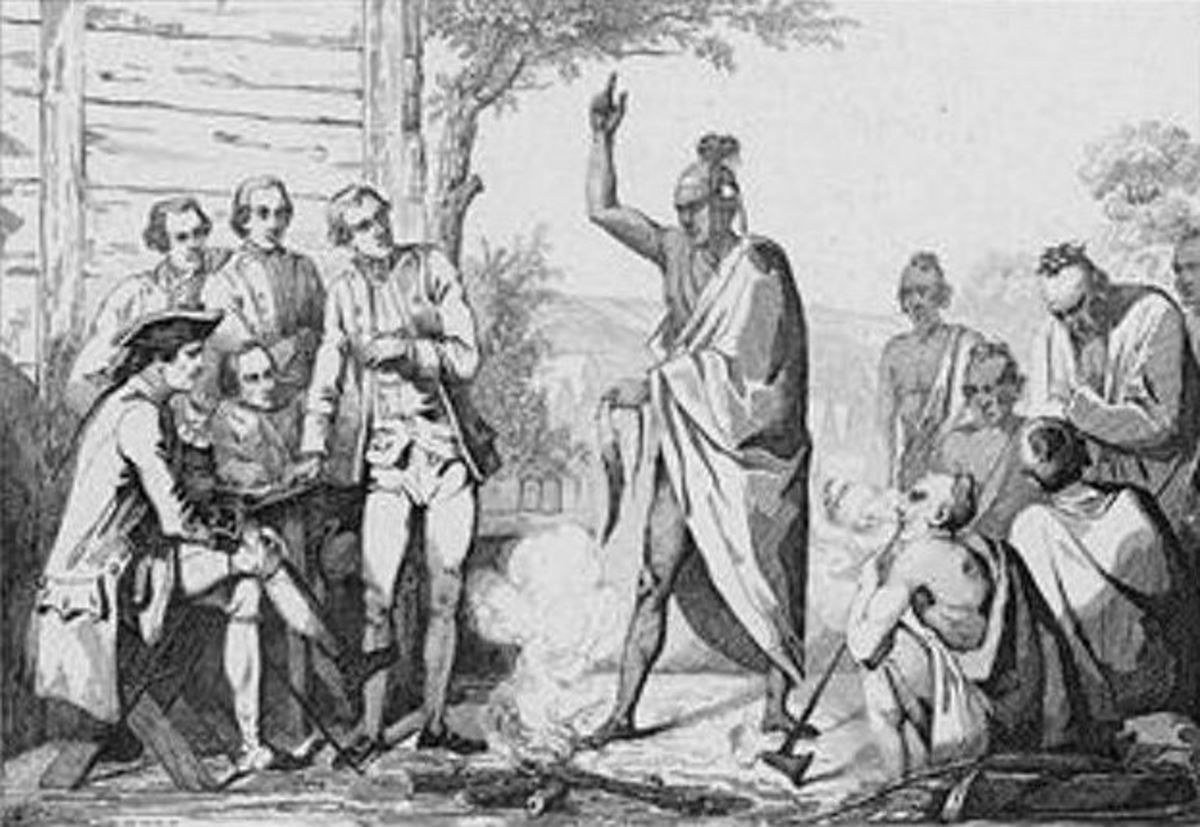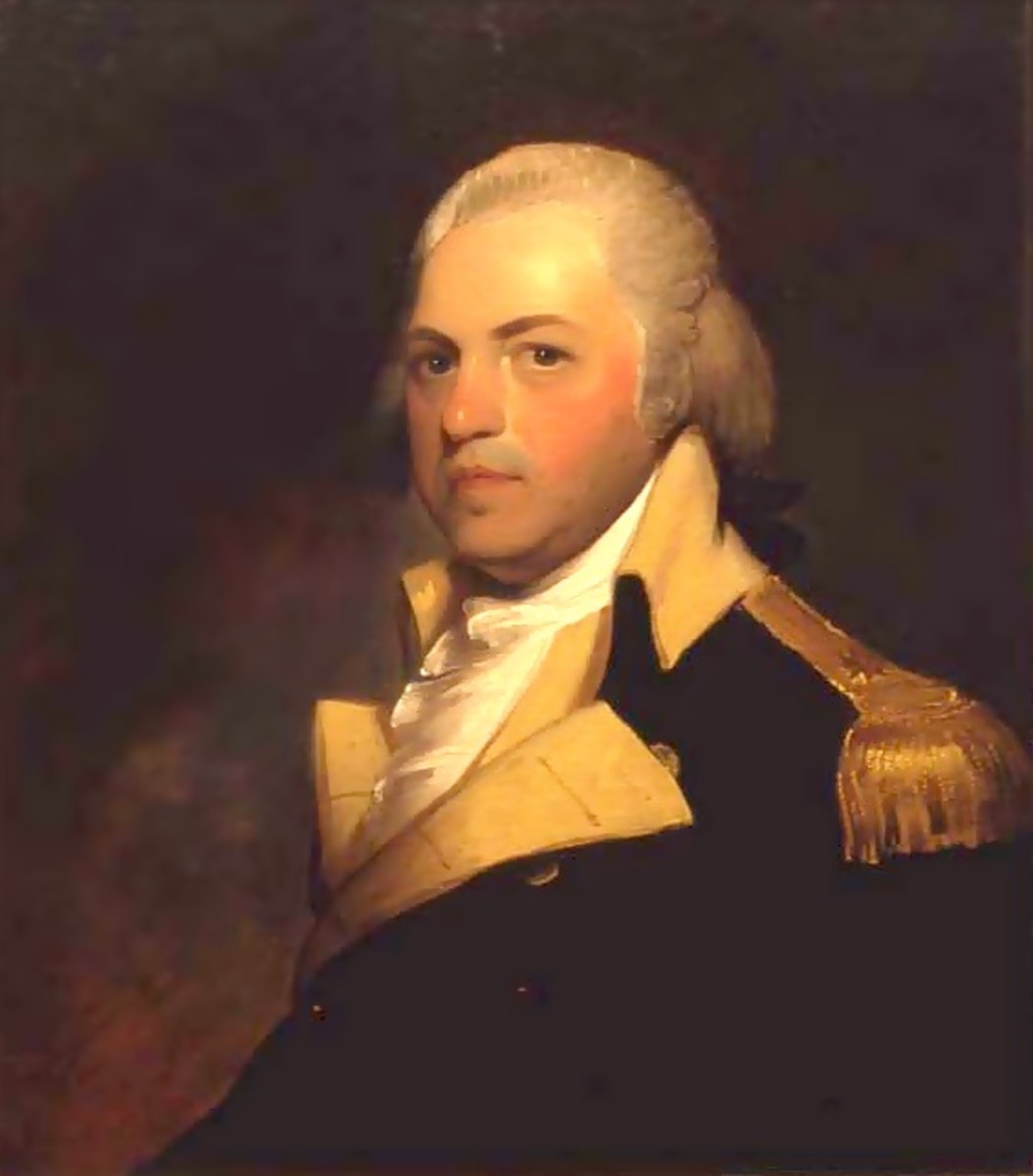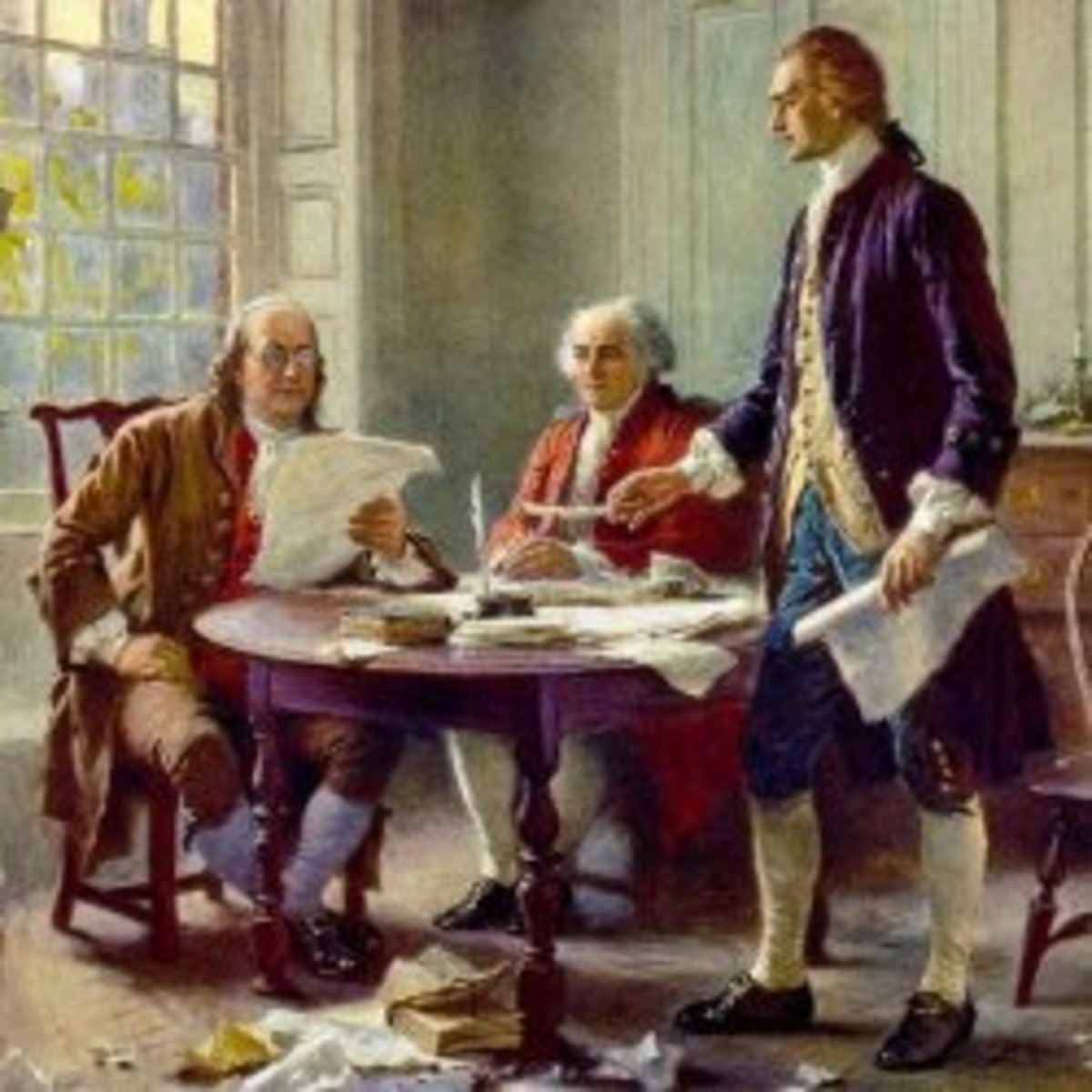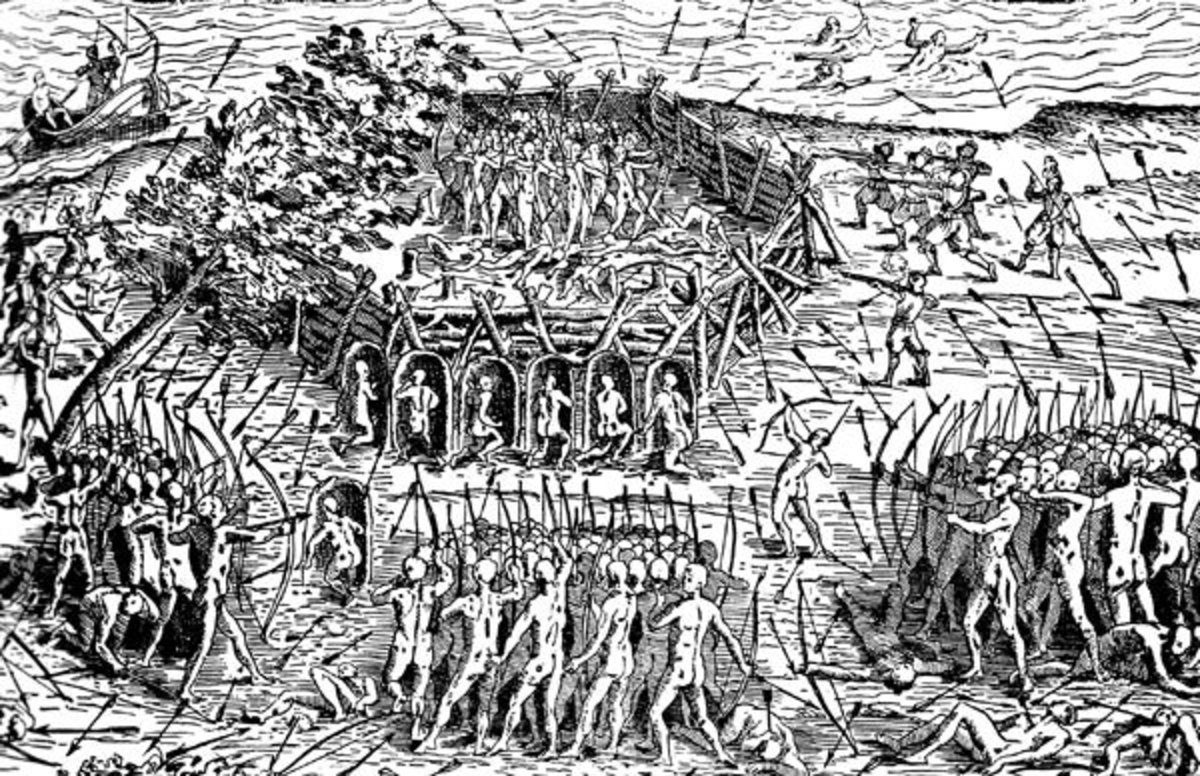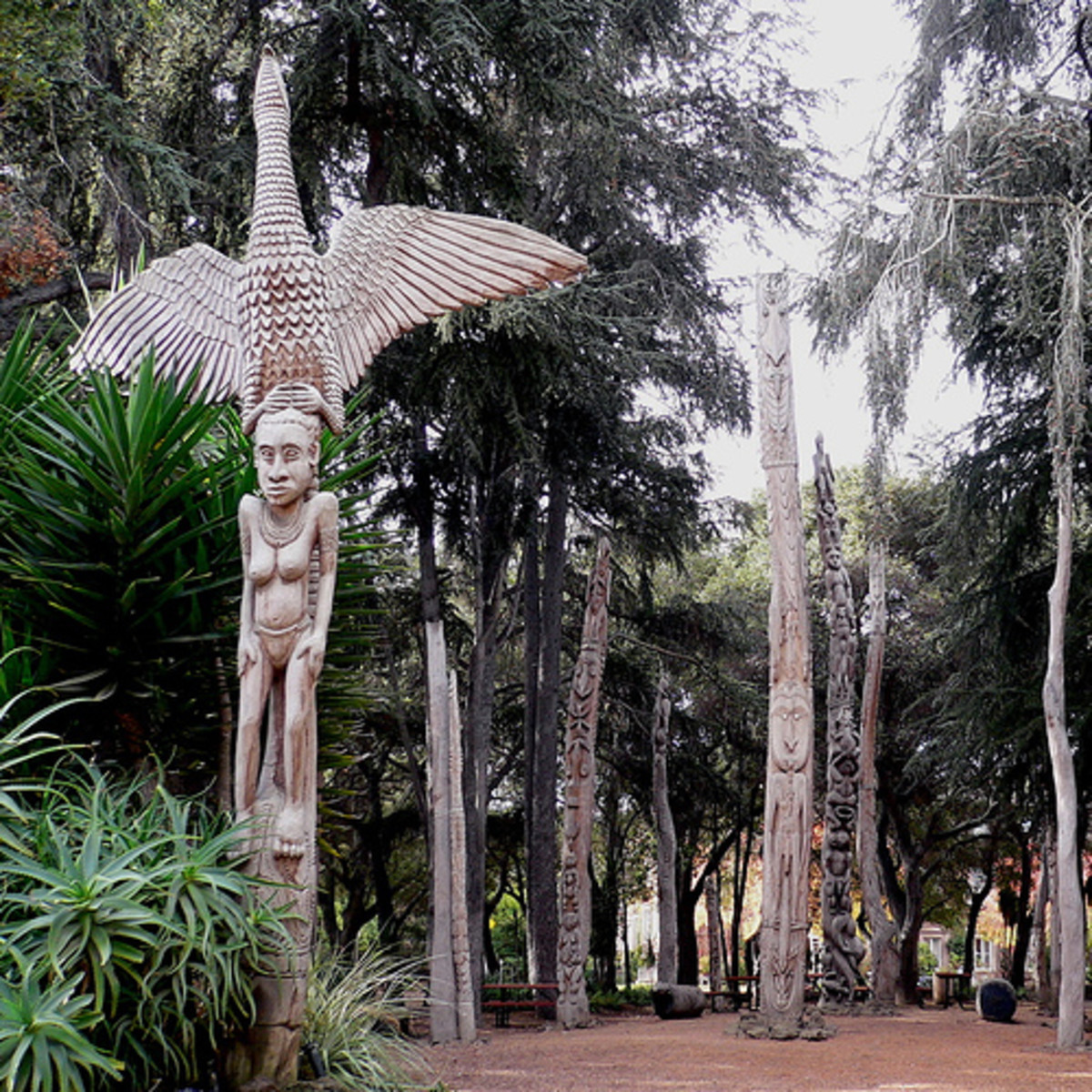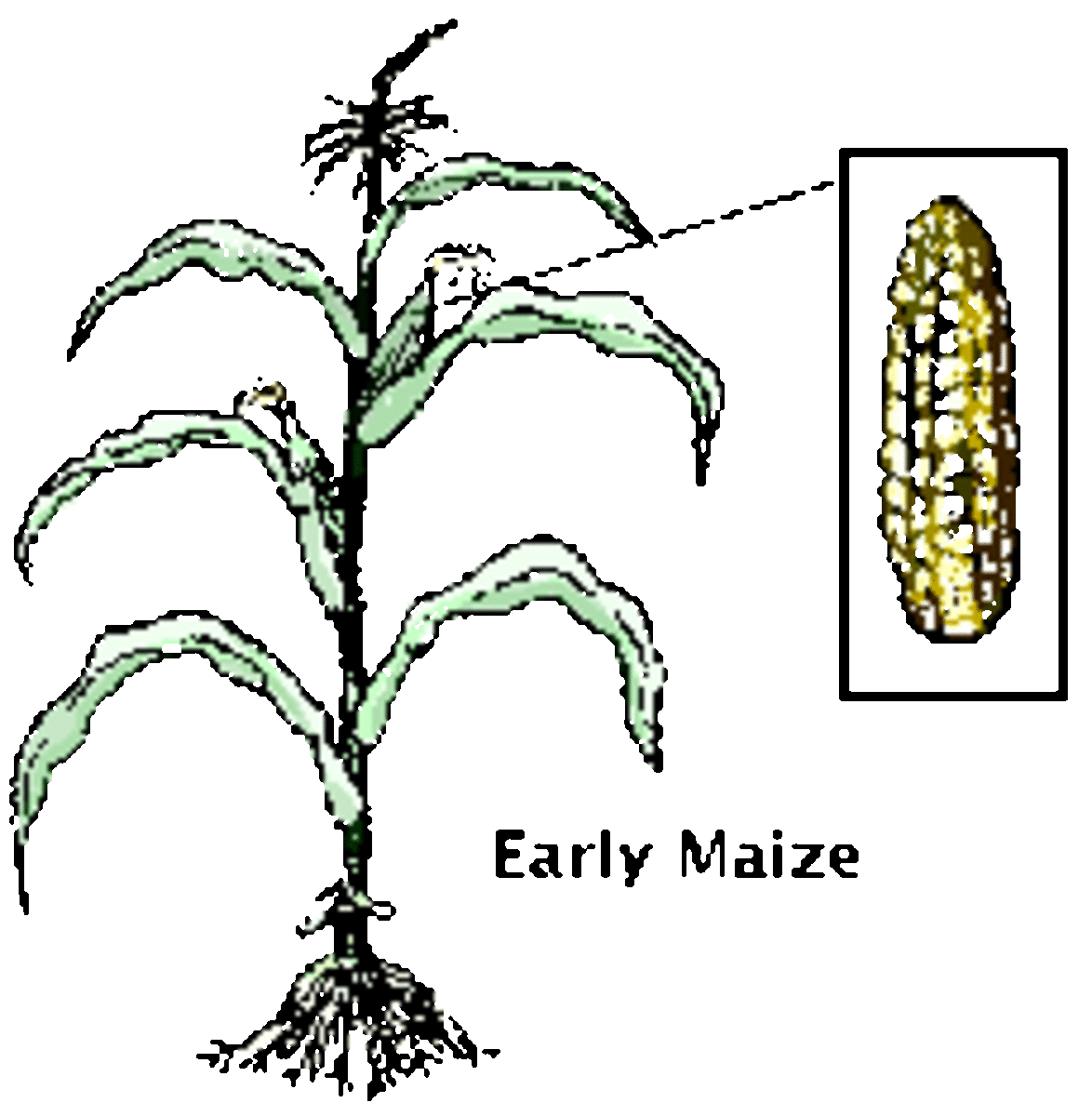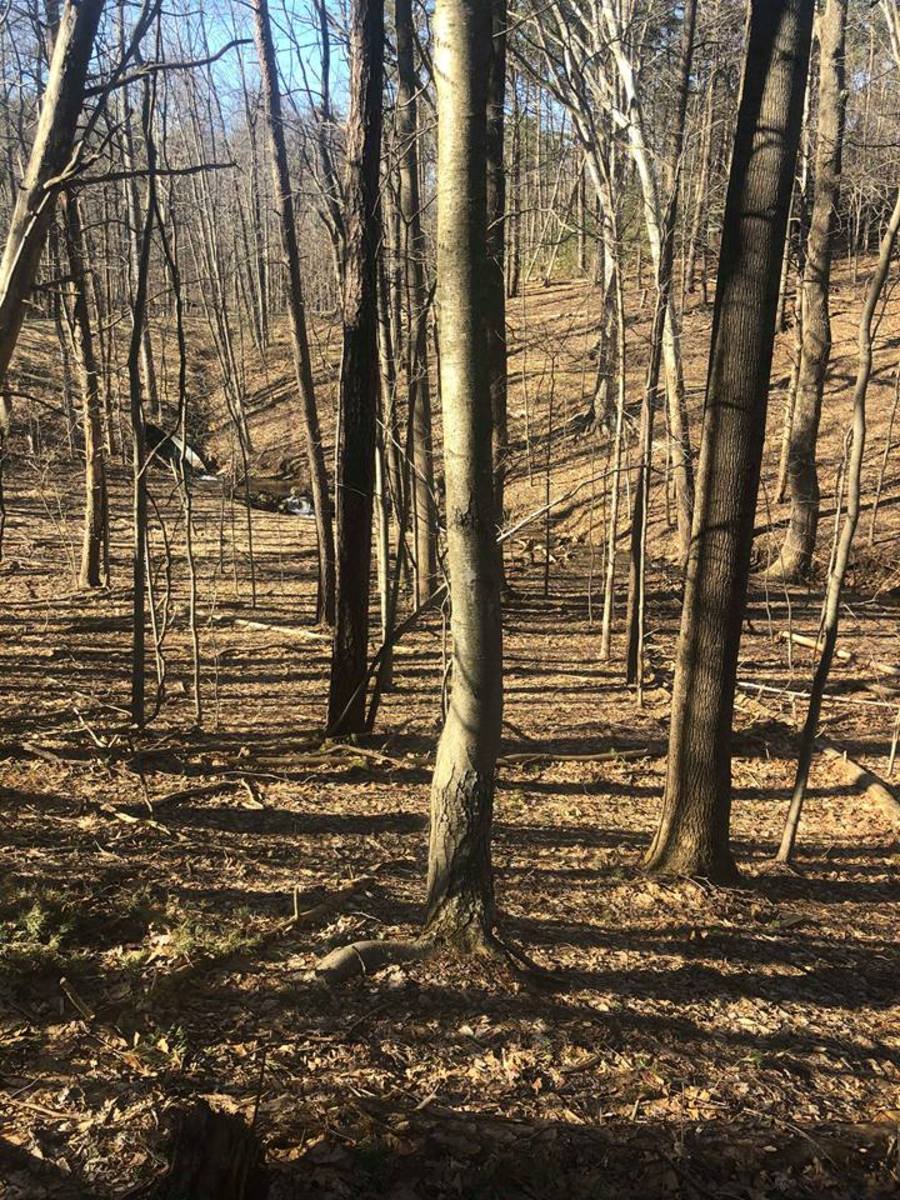- HubPages»
- Education and Science»
- History & Archaeology»
- History of the Americas
The American - Indian Wars 1540 to 1783
The Indian Wars in Art
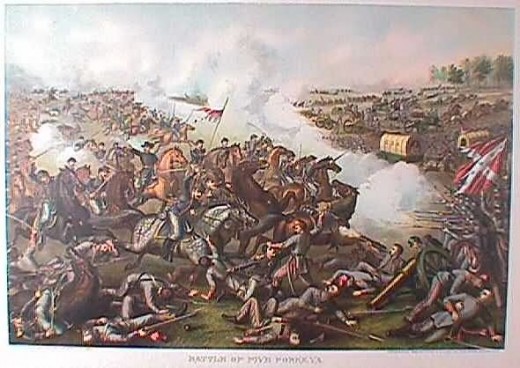
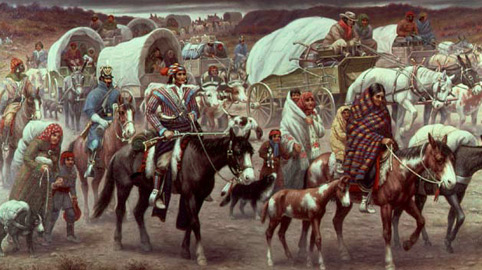
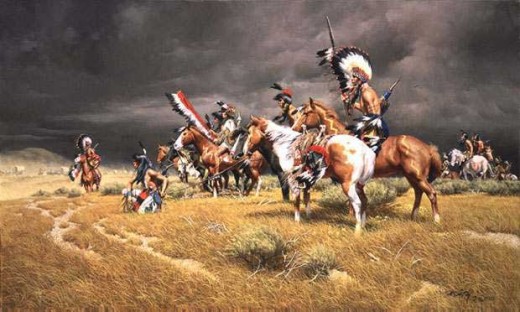
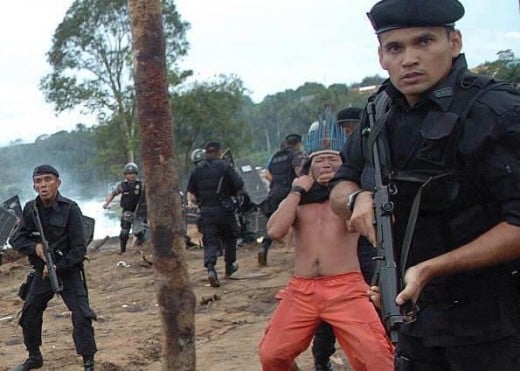
The Foundations of National Rivalries
After the destruction of the Aztecs and Incas, the conquest of the "New World" began in earnest with intense rivalry between the imperialist monarchies of France, Spain, England, Portugal, the Netherlands and Germany. The main contenders were the British, French and Spanish, who carved up the “new found” Americas between them at the expense and genocide of the First Nations. Wars shifted boundaries, with the French losing a lot during the years of French Revolution beginning in 1789 within Europe. The French once held vast territories from much of Ontario to the Maritimes and extending in a wide swath along the Mississippi valley to the Gulf of Mexico. When the French lost support in the new world, the English ended up seizing much of the territory, often employing Indians like the Algonquin and the Iroquois Confederacy to help them. They did this again during the post American Revolution wars between the former colonies and Britain. Once the French were mostly driven out, the war on the First Nations evolved as settlers drove ever westward. The First Nations found themselves in a massive pincer movement with the Spanish on the southwest in California and Mexico and the English moving in from the Hudson Bay, the original 13 colonies and Maritimes to the north east.
"Indian Wars” is the name generally used in the United States to describe a series of conflicts between the colonial (pre 1776) or federal government (post 1776) and the First Nations people. The earliest English settlers in what would become the United States often enjoyed peaceful relations with nearby tribes. As early as the Pequot War of 1637, the colonists were taking sides in military rivalries between various First Nations in order to assure colonial security and open further lands for settlement. The wars, which ranged from the 17th century (King Philip's War, King William's War, and Queen Anne's War at the opening of the 18th century) to the Wounded Knee massacre and "closing" of the American frontier in 1890, generally resulted in the opening of Native American lands to further colonization, the conquest of First Nations and their assimilation, or forced relocation to reservations. Modern scholars take different positions on the ongoing genocide debate. But, for the sake of argument, the deliberate use of smallpox infected blankets and the near extinction of the bison certainly rate as acts of genocidal warfare, striking at the health and food base of the First Nations. Various statistics have been developed concerning the devastation of these wars on both the conquering European settlers in the new world America and original inhabitants of the First Nations. The most reliable figures are derived from collated records of strictly military engagements such as by Gregory Michno which reveal 21,586 dead, wounded, and captured civilians and soldiers for the period of 1850 to 1890 alone during the main thrust of the “Indian Removal” era. Other figures are derived from extrapolations of rather cursory and unrelated government accounts such as that by Russell Thornton who calculated that some 45,000 Indians and 19,000 whites were killed. This later rough estimate includes women and children on both sides, since noncombatants were often killed in frontier massacres. In his book “The Wild Frontier”, atrocities during the American-Indian War from Jamestown Colony to Wounded Knee, amateur historian William M. Osborn sought to tally every recorded atrocity in the area that would eventually become the continental United States, from first mainland contact in 1500 to the closing of the frontier during 1890, determined that 9,156 people died from atrocities perpetrated by Native Americans, and 7,193 people died from those perpetrated by Europeans. Osborn defines an atrocity as the murder, torture, or mutilation of civilians, the wounded, and prisoners. That is what can be accounted for. Real figures are probably much higher. In actuality, the atrocities were much higher when tactics like food destruction and germ warfare are calculated into the history.
What is not disputed in any of this is that the savagery from both sides of the war in all its permutations and combinations; the First Nations' own methods of brutal warfare and the Americans destructive campaigns was such as to be noted in every year in newspapers, historical archives, diplomatic reports and America’s own Declaration of Independence. "…[He] has endeavored to bring on the inhabitants of our frontiers, the merciless Indian Savages whose known rule of warfare, is an undistinguished destruction of all ages, sexes and conditions."
The use of germ warfare by distributing smallpox infected blankets and tuberculosis spared no one in its results. In some cases, whole tribes disappeared from the face of the earth in a complete genocide. No man, woman or child was spared the ravages of this type of war. Though the Indians had methods that they used, the theory of the permanent revolution tells us that the introduction of the rifle, pistol and methods like brainwashing and scalping were tools and ideas first adopted from the whites who taught the "savages" their use in the wars between the French and English. The Indians did not have to re-invent the rifle in order to use one already made and handed over to them as a recruit of a wider war. War, being a profitable enterprise, virtually guaranteed that the Indians would receive such tools because it was profitable to do so for the distributors of arms. In all of this, we have to consider the background of European economics where bankers bet on both sides in a war and profited thereby as early as the beginning of the 19th century and the fact that this was carried into the new world for the same reason of profiteering. Inter-nation rivalry between the First Nations was promoted to help clear the land for the settlers and the introduction of the rifle and pistol was the means to do it. This was one part of the program to promote easy expansion by the settlers with First Nations doing some of the work for them. Of course, this tactic didn't always work. Where this failed, germ warfare and the destruction of the food base was used. The food base was destroyed by three main methods, i.e., the change of the ecosystem with introduced animals, insects and plants, the release of feral pigs and raising of European sourced cattle on expanding ranch holdings and the deliberate mass slaughter of the bison. The spoils of war were great and consisted of an entire hemisphere. Prior to the beginning of the 19th century, the big profit items were the fur trade, gold, silver and surprisingly, coca from which we derive cocaine. Tobacco would join this cash generator later. European aristocrats developed tactics such as the use of hired privateers, later to be called pirates to raid one another ships for plunder originally taken by robbery from many First Nations. Pirates/privateers also raided and plundered newly established fortifications on the coasts.
The “Indian Wars” collectivley were comprised of a series of smaller wars and skirmishes, some of which have come down to us in recent events. American First Nations were diverse peoples with their own distinct tribal histories that were no more a single people than the many European nations. First Nations lived in societies organized in a variety of ways. First Nations usually made decisions about war and peace at the local level, though they sometimes fought as part of formal alliances, such as the Iroquois Confederacy in the northeast, or in temporary confederacies inspired by leaders such as chief Tecumseh.
American Revolutionary War
The changeover from dominating British colonialism to American independence as an autonomous bourgeois nation was to involve the First Nations in the complex dance of war that was to center on the 1776 American Revolution. The American Revolutionary War that followed from the resistance of British taxation to the declaration of independence resulted in two parallel wars. While the war in the east was a struggle against British imperialist rule, the war in the west was an "Indian War". The newly proclaimed 13 independent colonies of the United States competed with the British for the allegiance of American First Nations east of the Mississippi River. The colonial interest in westward settlement, as opposed to the British policy of maintaining peace, was one of the minor causes of the war. Most First Nations in the emerging US who joined the struggle sided with the British, hoping to use the war to halt colonial expansion onto their land. The Revolutionary War was thus the most extensive and destructive “Indian war” in US history. Much in the way of life and territory was lost in the extended war. The war raged on and off over the decades from the war of independence to the end of the Civil War. Along the way, the British were involved directly or remotely.
Many First Nation communities were divided over which side to support in the war. For the Iroquois Confederacy, the American Revolution resulted in a civil war among the six nations. The Six Nations split with the Oneidas and Tuscaroras siding with the Americans and the other four nations fighting with the British. While the Iroquois tried to avoid fighting directly against each other, the American Revolution eventually forced Iroquois to Iroquois warfare. The defeated groups as well as those who supported the Americans lost much of their land within the United States as a consequence of the revolutionary war and the infighting. The British Crown aided the now landless Iroquois by rewarding them with a reservation at Grand River in Canada. Cherokees split into a neutral or pro-American faction and the anti-American faction that the Americans referred to as the Chickamaugas, led by chief Dragging Canoe. Many other First Nations communities were similarly divided. Frontier warfare was particularly brutal, and numerous atrocities were committed on both sides. Both European and First Nations noncombatants suffered greatly during the war; villages and food supplies were frequently destroyed during military expeditions. The largest of these militarist expeditions was the Sullivan Expedition of 1779, which destroyed more than 40 Iroquois villages in order to neutralize Iroquois raids in upstate New York. The expedition failed to have the desired effect: American First Nation activity became even more galvanized and determined to win against the invaders.
First Nations were stunned to learn that when the British made peace with the Americans in the Treaty of Paris during 1783, that the British ceded a vast amount of American First Nations territory to the United States 13 colonies without informing the British First Nation allies. The United States initially treated the First Nations who had fought with the British as a conquered people who had lost their land. As a conquered people, they had no recourse through the constitution and this fact is worded in the constitution itself where conquered people along with enemy combatants are not granted the same rights as those included in the constitution. When this policy proved impossible to enforce due to the fact that the First Nations had lost the war on paper, but not on the battlefield; the policy was abandoned in a betrayal that was to become a trademark for later treaty dealings. The 13 colonies of the fledgling United States was eager to expand, and the national government initially sought to do so only by purchasing First Nations land in treaties. This was another painful lesson endured by the First Nations and the first great lesson in North America. The various states, settlers and First Nations were frequently at odds with this policy, and more warfare followed.
More on the struggles of the First Nations
- History of the First Nations
Before 1492 AD, the First Nations, comprising some 500 nation-tribes-clans with a few advanced civilizations, existed in relative peace inasmuch was possible from raiding parties from one group or nation... - History of the First Nations, the Aztecs
The sun stone is a calendar system that worked on a couple of systems, some of it interchangeable with the Maya, but not all. It calculates the year as 365 days.Mexico City Mexico City, Distrito Federal,... - History of the First Nations: The Inca
Inca Machu Picchu Machu Picchu, Inca Trail, Peru Machu Picchu high in the Peruvian Andes is one of the most amazing ancient cities. Alone, it is a worthwhile tourist destination. The Inca or Inka First Nation... - The Californian First Nations
Several main nations inhabited what is now California prior to the arrival of the Spanish and then the English. Most First Nations met with unparalleled catastrophe at the hand of the invaders from Europe....


